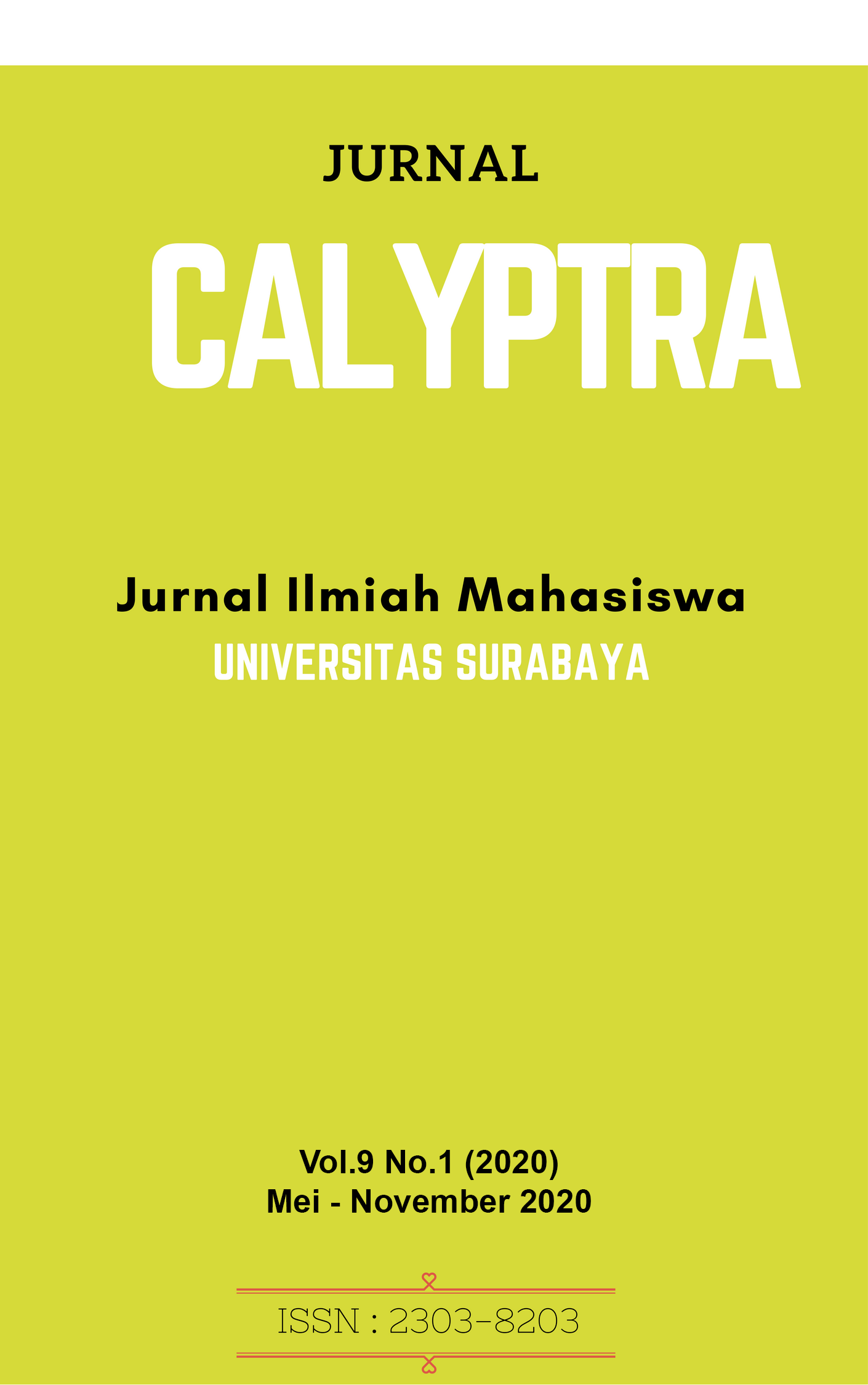Stabilitas Fisik Dan Ph Sediaan Gel Antiaging Ekstrak Buah Mengkudu (Morinda Citrifolia L.)
 Abstract Views:
561 times
Abstract Views:
561 times
 PDF Downloads:
785 times
PDF Downloads:
785 times
Abstract
ABSTRAK- Penelitian ini dilakukan dengan tujuan mengetahui stabilitas fisik dan pH sediaan gel mengkudu sebagai antiaging. Formula yang dibuat yaitu gel tanpa ekstrak mengkudu (basis), gel dengan konsentrasi ekstrak mengkudu 5% (Formula I) dan gel dengan konsentrasi ekstrak mengkudu 10% (Formula II) yang disimpan dalam climatic chamber dengan suhu 40°C ± 2°C/75% ± 5% RH selama 30 hari. Pengamatan dilakukan pada hari ke-0,15dan30 dengan parameter fisik meliputi organoleptis, viskositas, sifat alir,berat jenis, dan daya sebar serta parameter pH. Data hasil pengamatan pH, daya sebar, berat jenis, dan viskositas dianalisis secara ANOVA one way dengan derajat kepercayaan 95%, sedangkan organoleptis, dan sifat alir dianalisis secara deskriptif. Hasil penelitian menunjukkan pada sediaan basis gel, formula I dan formula II pada hari ke-0 terdapat perbedaan bermakna dari parameter pH (p= 0,000) dan karakteristik fisik yang meliputi parameter organoleptis, daya sebar (p= 0,006), dan viskositas (p= 0,000).Sediaan basis tidak menunjukkan adanya perbedaan bermakna secara pH, organoleptis, daya sebar, berat jenis, dan viskositas. Formula I tidak terdapat perbedaan bermakna pada pH dan berat jenis kecuali pada organoleptis, viskositas (p= 0,014) dan daya sebar (p=0,000). Pada Formula II tidak terdapat perbedaan bermaknasecara daya sebar kecuali pada pH (p= 0,000), organoleptis, viskositas (p= 0,024), dan berat jenis (p= 0,019).
Kata Kunci: stabilitas fisika dan pH, gel, mengkudu, antiaging
ABSTRACT- This research was conducted with the aim of knowing the physical stability and pH gel formulation of noni as antiaging. Formula made that gel without extract of noni (base), gel with concentration of noni extract 5% (Formula I) and gel with concentration of noni extract 10% (Formula II) were stored in a climatic chamber with temperature of 40°C ± 2°C/75% ± 5% RH for 30 days. Observation were made on days 0, 15 and 30 with physic parameters test were organoleptic, viscocity, flow properties, density, and spreadibility along pH parameters. Data observations of pH, spreadibility, density, dan viscosity was analyzed by ANOVA one-way with a 95% confidence level, while the organoleptic and flow properties analyzed with descriptively. The results showed preparation base gel, formula I, and formula II on day 0 there were significant differences of parameter in pH (p = 0,000) and characteristic physical that include parameter organoleptic, spreadibility (p = 0,006), and viscosity (p = 0,000). Preparation base there were no significant differences for pH, spreadibility, density, and viscosity.
Formula I there are no significant differences at pH and density except in the organoleptic, viscosity (p = 0,014) and spreadibility (p = 0,000). In Formula II there were no significant differences at spreadibilty, except for pH (p = 0,000), organoleptic, viscosity (p = 0,024), and density (p = 0,019).
Keywords: physical stability and pH, gel, noni, antiaging
Downloads
References
Agoes, G. (2012). Sediaan Farmasi Likuida-Semisolida, Unit Bidang Ilmu Teknologi Farmasi Institut Teknologi, Bandung.
Badan POM Republik Indonesia. (2006). Petunjuk Teknis Pengawasan Alpha Hydroxy Acid (AHA) Dalam Kosmetik, Jakarta.
Barel, A.O., Paye, M. dan Maibach, H.I. (2009). Handbook of Cosmetic Science and Technology, Third Edition, New York:Informa Healthcare USA, Inc. p. 233, 261-262.
Departemen Kesehatan Republik Indonesia. (1979). Farmakope Indonesia, Edisi Ketiga, Departemen Kesehatan Republik Indonesia, Jakarta, Hal. 33.
Departemen Kesehatan Republik Indonesia, (2014). Farmakope Indonesia, Edisi Kelima, Departemen Kesehatan Republik Indonesia, Jakarta.
Djajadisastra, J. (2004). Cosmetic Stability, Makalah disajikan dalam Seminar Setengah Hari HIKI, Jakarta, 18 November.
Herdiana, Y. (2007). Formulasi Gel Undesilenil Fenilalanin Dalam Aktifitas Sebagai Pencerah Kulit. Karya Ilmiah. Fakultas Farmasi Unipad Jatinangor.
ICH. (2003). ICH Topic Q 1 A (R2): Stability Testing of New Drug Substances and Products, European Medicines Agency, 1-20.
Kahkonen, M.P., Hopia, A.I., Vuorela, H.J., et al. (1999). Antioxidant Activityof Extracts Containing Phenolic Compounds. J. Agric. FoodChem. 47: 3954-3962.
Martin, A., Swarbrick, J. and Cammarata, A. (1993). Farmasi Fisik: Dasar-dasar FarmasiFisik Dalam Ilmu Farmasetik, Edisi Ketiga, UI-Press, Jakarta, Hal.1176-1182.
Mitsui, T. (1997). New Cosmetic Science, 1thed, Elsevier Science B.V, Amsterdam, hal. 3.
Nayak, B.S., Sandiford, S. and Maxwell, A. (2007). Evaluation of The Woundhealing Activity of Ethanolic Extract of Morinda citrifolia L. Leaf. Evid Based Complement Alternative Medicine, 6 (3), hal. 351-356.
Pietta, P.G. (1999). Flavonoids as Antioxidants, Reviews, J. Nat. Prod, 63, 1035-1042.
Rasal, V.P., Sinnathambi, A., Ashok, P., et al. (2008). Wound Healing and Antioxidant Activities of Morinda citrifolia Leaf Extract in Rats, Iranian Journal of Pharmacology & Therapeutics, Vol: 7, No. 1,hal. 49-52.
Rowe, R.C., Sheskey, P.J. and Quinn, M.E. (2009). Handbook of Pharmaceutical Excipients, 6th edition, Pharmaceutical Press, London, p. 326-329; 441-444;592-594; 596-598; 654-656; 656-658; 659-661.
Serafini, M.R., Santos, R.C., Guimarães, A.G., et al. (2011). Morinda citrifolia Linn Leaf Extract Possesses Antioxidant Activitiesand Reduces Nociceptive Behavior and Leukocyte Migration. J. Med. Food, 14(10):1159-1166.
Sofia, D. (2003). Antioksidan dan Radikal Bebas. [online]. Available: http://www.chem-istry/?sect=artikel&ext=81 (diakses 01-09-2016).
Voigt, R. (1994). Buku Pelajaran TeknologiFarmasi, edisi 5, Gadjah Mada University Press, Yogyakarta.
Wasitaatmaja, S.M. (1997). Penuntun Ilmu Kosmetik Medik, UI Press, Jakarta, 3-15
Wijaya, A. (1996). Radikal Bebas dan Parameter Status Antioksidan, ForumDiagnosticum, Prodia Diagnostic Educational Services, No. 1 : 1-12.
- Articles published in CALYPTRA are licensed under a Creative Commons Attribution-ShareAlike 4.0 International license. You are free to copy, transform, or redistribute articles for any lawful purpose in any medium, provided you give appropriate credit to the original author(s) and the journal, link to the license, indicate if changes were made, and redistribute any derivative work under the same license.
- Copyright on articles is retained by the respective author(s), without restrictions. A non-exclusive license is granted to CALYPTRA to publish the article and identify itself as its original publisher, along with the commercial right to include the article in a hardcopy issue for sale to libraries and individuals.
- By publishing in CALYPTRA, authors grant any third party the right to use their article to the extent provided by the Creative Commons Attribution-ShareAlike 4.0 International license.



